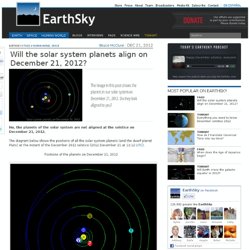

The Raw Story. Dark flow. The researchers had suggested that the motion may be a remnant of the influence of no-longer-visible regions of the universe prior to inflation.

Telescopes cannot see events earlier than about 380,000 years after the Big Bang, when the universe became transparent (the Cosmic Microwave Background); this corresponds to the particle horizon at a distance of about 46 billion (4.6×1010) light years. Since the matter causing the net motion in this proposal is outside this range, it would in a certain sense be outside our visible universe; however, it would still be in our past light cone. The results appeared in the October 20, 2008, issue of Astrophysical Journal Letters.[2][3][4][5][non-primary source needed] Since then, the authors have extended their analysis to additional clusters and the recently released WMAP five-year data. Location[edit] Drake equation. The Drake equation is a probabilistic argument used to estimate the number of active, communicative extraterrestrial civilizations in the Milky Way galaxy.

The equation was written in 1961 by Frank Drake not for purposes of quantifying the number of civilizations,[1] but intended as a way to stimulate scientific dialogue at the world's first SETI meeting, in Green Bank, West Virginia. The equation summarizes the main concepts which scientists must contemplate when considering the question of other radio-communicative life.[1] The Drake equation has proved controversial since several of its factors are currently unknown, and estimates of their values span a very wide range. Galaxy filament. Brane cosmology. Brane cosmology refers to several theories in particle physics and cosmology related to string theory, superstring theory and M-theory.

Brane and bulk[edit] The central idea is that the visible, four-dimensional universe is restricted to a brane inside a higher-dimensional space, called the "bulk" (also known as "hyperspace"). If the additional dimensions are compact, then the observed universe contains the extra dimensions, and then no reference to the bulk is appropriate. In the bulk model, at least some of the extra dimensions are extensive (possibly infinite), and other branes may be moving through this bulk. Interactions with the bulk, and possibly with other branes, can influence our brane and thus introduce effects not seen in more standard cosmological models. Why gravity is weak and the cosmological constant is small[edit] Models of brane cosmology[edit] One of the earliest documented attempts to apply brane cosmology as part of a conceptual theory is dated to 1983.[5]
Multiverse. Ultimate fate of the universe. The ultimate fate of the universe is a topic in physical cosmology.

Many possible fates are predicted by rival scientific theories, including futures of both finite and infinite duration. Once the notion that the universe started with a rapid inflation nicknamed the Big Bang became accepted by the majority of scientists,[1] the ultimate fate of the universe became a valid cosmological question, one depending upon the physical properties of the mass/energy in the universe, its average density, and the rate of expansion. There is a growing consensus among cosmologists that the universe is flat and will continue to expand forever.[2][3] The ultimate fate of the universe is dependent on the shape of the universe and what role dark energy will play as the universe ages. Emerging scientific basis[edit] Theory[edit] Scale of the Universe 2. Recreating the Shaw-Fujiwaka translight engine. Chromoscope - View the Universe in different wavelengths. Pale Blue Dot « a simple prop.
SolarBeat. The Scale of the Universe. Universe. Space is the Place. NASA Images. NASA is considering a proposal to ‘catch’ an asteroid and drag it into orbit around the moon! Will the solar system planets align on December 21, 2012? No, the planets of the solar system are not aligned at the solstice on December 21, 2012.

The diagram below shows the positions of all the solar system planets (and the dwarf planet Pluto) at the instant of the December 2012 solstice (2012 December 21 at 11:12 UTC ). Positions of the planets on December 21, 2012 Find out which symbols represent which planets here. Look for yourself. Do these scattered planets look aligned to you?